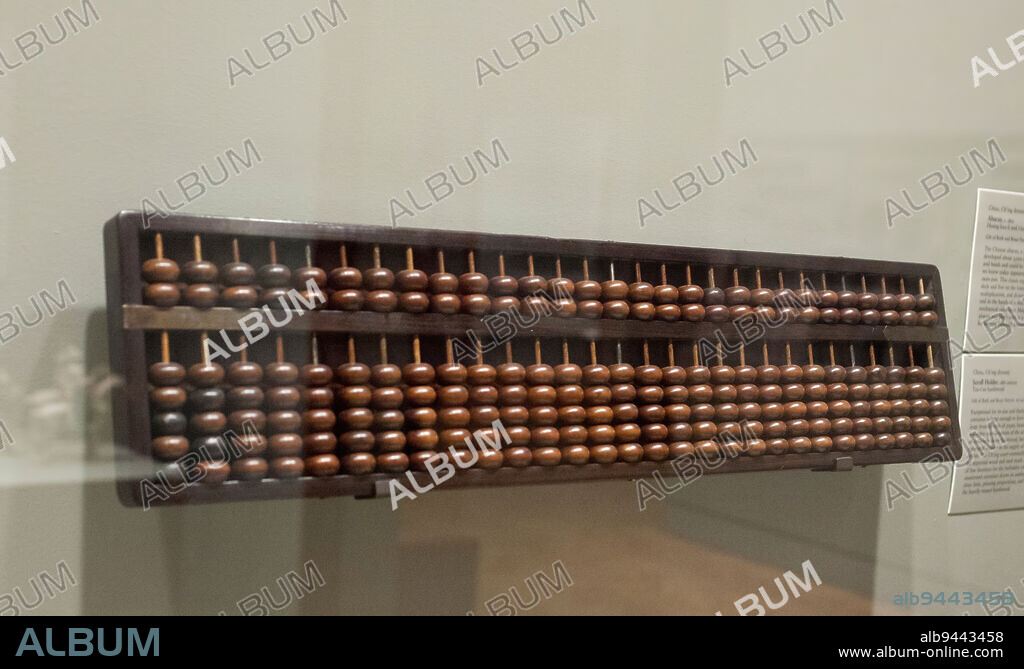alb9443458
Abacus, c. 1800, 7 9/16 x 32 5/16 x 1 3/8 in. (19.2 x 82.1 x 3.5 cm), Huang-hua-li and t'zu-tan hardwood, China, 18th-19th century, The Chinese abacus, a mechanical counting device, was developed about 5,000 years ago. It was built of wood and beads and could be easily carried. The form of abacus we know today appeared around 1200 a.d. and is called suan-pan. This classic type has two heads on the upper deck and five on the lower. Addition, subtraction, multiplication, and division are possible with the abacus, and in the hands of a skilled operator, it is faster than a mechanical calculator. Made of precious hardwoods, this abacus was likely used in a large, aristocratic household for keeping financial accounts.

|
Ajouter à une autre Lightbox |
|
Ajouter à une autre Lightbox |



Avez-vous déjà un compte? S'identifier
Vous n'avez pas de compte ? S'inscrire
Acheter cette image

Légende:
Voir la traduction automatique
Abacus, c. 1800, 7 9/16 x 32 5/16 x 1 3/8 in. (19.2 x 82.1 x 3.5 cm), Huang-hua-li and t'zu-tan hardwood, China, 18th-19th century, The Chinese abacus, a mechanical counting device, was developed about 5,000 years ago. It was built of wood and beads and could be easily carried. The form of abacus we know today appeared around 1200 a.d. and is called suan-pan. This classic type has two heads on the upper deck and five on the lower. Addition, subtraction, multiplication, and division are possible with the abacus, and in the hands of a skilled operator, it is faster than a mechanical calculator. Made of precious hardwoods, this abacus was likely used in a large, aristocratic household for keeping financial accounts.
Crédit:
Album / quintlox
Autorisations:
Modèle: Non - Propriété: Non
Questions sur les droits?
Questions sur les droits?
Taille de l'image:
5118 x 3080 px | 45.1 MB
Taille d'impression:
43.3 x 26.1 cm | 17.1 x 10.3 in (300 dpi)
Mots clés:
 Pinterest
Pinterest Twitter
Twitter Facebook
Facebook Copier le lien
Copier le lien Email
Email
